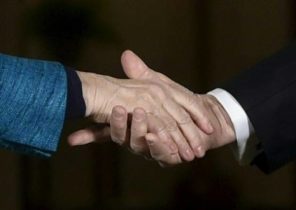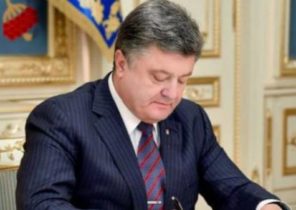
Nearly seven decades the military-industrial complex of the Soviet Union went toe-to-toe with the best companies of the West. In some cases, he surprised the West cheap, innovative and effective weapons systems. And sometimes it is very difficult collecting the planes that flew poorly, and ships that are barely kept afloat.
To save the Soviet Union could not, no arms, but some species could change the contours of the disintegration of the country. The relationship between technology and the human factor in the war, including doctrine and organization are very complex. Decisions about specific weapons systems can have far-reaching consequences for the defense of any country.
Often the decision to refuse from creation of certain types of weapons are reasonable. Events occur in such a way that the nation is focusing on her real interests and needs, not the pursuit of fame and prestige. In the case of Advice many samples of “wonder weapons” remained safely in the realm of fantasy as enemies of the Soviet Union and the Soviet Union itself.
Battleship of the type “Soviet Union”
In the period between the two world wars, the Soviet Union considered various options for development and improvement of its dilapidated fleet. Until the first decade of the 20th century kings were quite powerful and modern naval fleet. But after the Russo-Japanese war, the Russian shipbuilding is substantially behind the West, but the revolution has weakened the industry and the Navy.
By the end of 1930-ies of the Soviet economy recovered to such an extent that Stalin was able to think seriously about the program of naval construction. A priority in this ambitious plan took the battleships of the type “Soviet Union”, as well as cruisers and aircraft carriers. “The Soviet Union” was created approximately on the basis of the Italian ship Littorio, with a displacement of 60 thousand tons, 9 guns of 16-inch caliber (406.4 mm — approx. ed.) and possessing a speed of 28 knots. For its size it could compete with the most powerful battleships in the world, although due to lack of experience and poor building practices such ships could encounter numerous problems in sea battle.
The USSR in the period from 1938 to 1940 laid the four of the planned 16 battleships. The construction was carried out in Leningrad, Nikolayev (on the Black sea) and in Molotovsk (the White sea). The construction of one battleship in 1940 canceled due to low quality of work. The creation of the other three ships was suspended with the outbreak of the Second world war, but after its completion of construction in Leningrad set out to continue. But smart heads prevailed, and the ships were dismantled.
The construction of such ships required a colossal effort and money. If construction was started before the USSR would have spent a significant portion of its national income on three ships, two of which would not have been able to go to the Baltic and the Black sea, and the third was limited to the support of the convoys in the Arctic. Materiel and industrial capacity of the Soviet Union found a much better use than for the construction of these four battleships.
The carriers of the “eagle” and “Ulyanovsk”
The Soviet Union began to study the construction of aircraft carriers shortly after the revolution, but as in the history of battleships, economic difficulties, the backwardness of Soviet industry and the Second world war interrupted the design. After the war Stalin undertook several ambitious attempts in this direction, then the Soviet government began to develop a more modest project to build aircraft carriers. The class helicopter carrier “Moskva” entered the fleet in the mid 1960-ies, and then in1970-ies and 1980-ies came into service of the aircraft carriers with aircraft vertical and short takeoff and landing type “Kiev”.
Then everything became more complicated. Someone suggested to act gradually, but were supporters of the construction of a full carrier (talking about the project “eagle”). The Soviet Navy has chosen the first path, improving the ships of “Kiev” and putting forward the idea of building non-nuclear carriers of the “Admiral Kuznetsov” with a ramp for aircraft.
In the Soviet Navy was hoping “Ulyanovsk” will replace the “Kuznetsov”. Having a displacement of 80 thousand tons and nuclear power plants, “Ulyanovsk” has become the first real competitor to the American supervisores. The “Ulyanovsk” kept jumping, but also have established quite a powerful catapult to the deck could launch fighters with shock weapons and planes of distant radar detection. That is, he became more or less equal to the American carriers. For the first time in the Soviet Navy could get a carrier capable of conducting offensive operations at great distances around the world.
But as is often the case with Soviet weapons systems, disaster intervened. At the end of the cold war, when the collapse of the Soviet Union, to complete the construction “Ulyanovsk” has become extremely difficult, and only built building was dismantled. Looking back, you realize that the gradual approach to this construction was warranted, because the result of all these works is the emergence of aircraft carriers and personnel of the naval pilots. However, the decision to abandon the construction of supervisora meant only one thing: the Soviet Navy could not give friends such security assurances offered by the United States Navy. So he was forced to use the sea strategy of response, and not pre-emptive action resorted to by the Navy of the West. But by the time the Soviets anyway had nothing to offer.
Heavy bomber of the interwar period
Although the Soviet air force during the Second world war had a powerful strategic bomber force in the interwar period Moscow has actively experimented with four-engined bombers, long-range. Actually, in the beginning of the war, the Soviet Union aircraft of this type was greater than that of any other country. However, most of them were outdated TB-3.
At the beginning of the war, the Soviets decided to limit bomber PE-8, which very roughly resembled the British Avro 683 Lancaster and b-17 Boeing. PE-8 has not achieved such successes as these two aircraft, mainly because of design problems and supply. But the Soviet air force carried out a truly ambitious projects, including a heavy bomber K-7, which was similar to the feverish hallucination of the “Junkers” and crashed during the eighth test flight that killed 14 people on Board.
The most promising models are a family of TB-3 / ANT-20 / and TB-6. Just planes-monsters with six or more motors. The designers sacrificed speed and maneuverability for heavy weapons, on the theory that the bombers in the battle line capable of defend himself from their pursuit of aviation. Transportation of the ANT-20 had eight engines, and it could carry 72 passengers. At least, that was before the prototype machine fell in the suburbs, and 45 people died. The ANT-26 could be a bomber variant of the ANT-20 with 12 engines and a bomb load of over 15 tons, which is significantly more than the b-29.
In the sky up only prototypes of these aerial monsters, and got up for a while. If the Soviet Union decided to go in this direction, it certainly would have seriously hampered the development of Soviet tactical aircraft and would take significant resources from the land forces of the red Army. Giant ANT-26 would most probably be easy prey for the German interceptor aircraft, although he could fly from bases beyond the reach of the Luftwaffe. Unlike the Western allies, the Soviet Union could not afford to expend energy and money on lengthy and costly bombing campaign with the use of strategic aviation. He had to smash the Wehrmacht troops on the battlefield. If the USSR had gone the way of the development of strategic bombers, he could hardly hold back the German offensive.
Super-heavy tank of the Tu-42 (as in the text, talking about T-42 — approx. TRANS.)
In 1930-e years the Soviet and German tanks in its design was a bit similar because of a common experience of the Kazan tank school. Being rejected in the international arena, Weimar Germany and the Soviet Union in the late 1920-ies began a fruitful collaboration in the development of aviation, armored vehicles and chemical weapons. When came to power the Nazis, the partnership was minimized, but the Soviets and the Germans came innovative ideas about tank technology and about its combat application.
In the interwar period there were several countries that had planned to create super-heavy tanks. It is a combat vehicle weighing three and even four times larger than the standard tanks. In particular, the German designer, Edward Grotte (Grotte Edward) worked on the creation of super-heavy models to Germany and the Soviet Union. Among the most interesting specimens, presented by the Soviet General staff, was the hundred-ton monster with three towers and a crew of 14-15 people, T-42, develops a speed of 27 kilometers per hour.
The t-42 did not progress beyond prototypes, but in Soviet military circles he attached great importance. Among other, more realistic projects, was the T-35, T-100, SMK, KV-4 and KV-5. To the stage of production reached only 45-ton tank T-35 with five towers. Almost all of the 60 built cars was destroyed in the first days of operation “Barbarossa”. This usually occurred due to mechanical breakdowns and flight crew.
Like most heavy tanks, the T-42 was too heavy, expensive and slow, and the mass production did not go. If the Red army decided to purchase this monster, it could lead to disaster in the battles against Japan, Finland and Germany, and the Soviet tank doctrine would be distorted and would be useless.
T-4 Sukhoi
Many of the Soviet bombers of the postwar period were the direct counterparts of the American samples. T-4 was in fact a direct copy of the American b-29. T-4 Sukhoi became a response to the Soviet Union on the b-70 Valkyrie. This large and incredibly fast bomber capable of flying at high altitudes, has become a real challenge for the Soviet defense industry (as many expected).
T-4 was to develop a speed of M=3, have a ceiling of 21 thousand kilometers. Visually and according to the characteristics he resembled In-70. But since the organizational structure of the Soviet air force differed from the American, T-4 was intended for tactical tasks such as reconnaissance and attacks by anti-ship missiles. Anti-ship missiles Kh-22 on Board. MT-4 is really scary.
But the technical requirements were for the Soviet Union, and the aircraft serial production did not. Tolerances at such speed and at such a high altitude is very strict, and the Soviet aircraft industry was unable to establish reliable production of new machines. Moreover, the T-4 was largely the same problems as the At-70, including the problems of interception and vulnerability to anti-aircraft missiles. Based on the T-4 was created by the plane is the successor of the Tu-160 with variable geometry wings. In General, it was built only 35 of these aircraft, and weapons they came about 10 years after the scheduled date of commissioning of the T-4.
If the Soviet Union still built T-4, he would have to abandon much of its tactical aviation. But he would get a modern supersonic bomber capable of delivering to target anti-ship missiles. Because of this, it would be much harder to organize the defense of the American carrier battle groups, than after the appearance of the Tu-22M of the smaller size and range. Production of the T-4 can make adjustments to U.S. procurement, and the United States probably would pay more attention to V-1A, and strategic aircraft-interceptors. T-4 are extremely expensive to operate and maintain, but some of them could survive the collapse of the Soviet Union and now would be in service in the Russian air force.
Conclusion
The Soviet military was grandiose aspirations and global ambitions, and the military-industrial base with major disadvantages. In some cases, because such restrictions could create great weapons such as the T-34 and the MiG-21. In other cases, these limitations have prevented the adoption of disastrous decisions in the interwar period, say, about creating a giant heavy bombers, huge battleships and heavy tanks. But the main conclusion is that although the decision on creation of weapons systems often have an impact on the entire military-industrial base, they very rarely change the fate of countries.
Robert Farley teaches at Petersenovskaya the school of diplomacy and international trade (Patterson School of Diplomacy and International Commerce) at the University of Kentucky. His work includes military doctrine, national security, and Maritime Affairs.
This article first appeared in 2014 and was reprinted because the reader’s interest.







